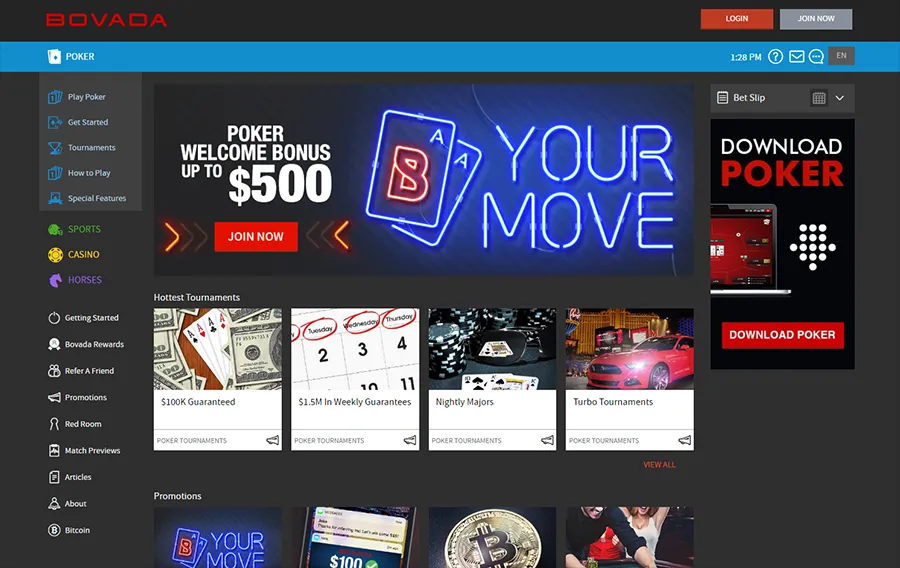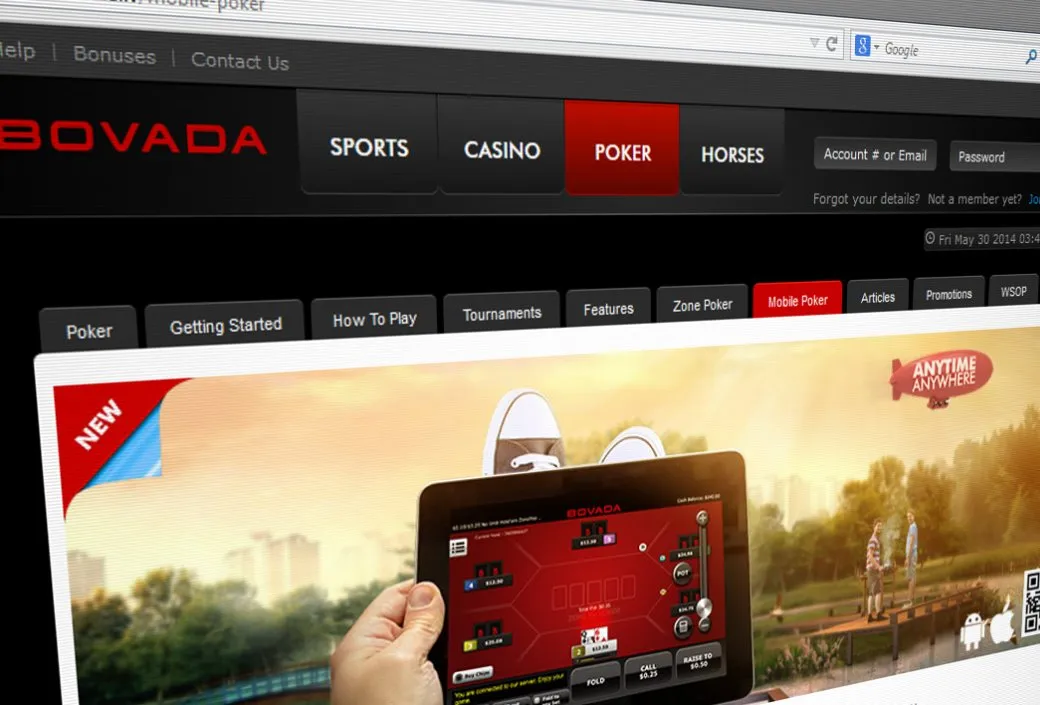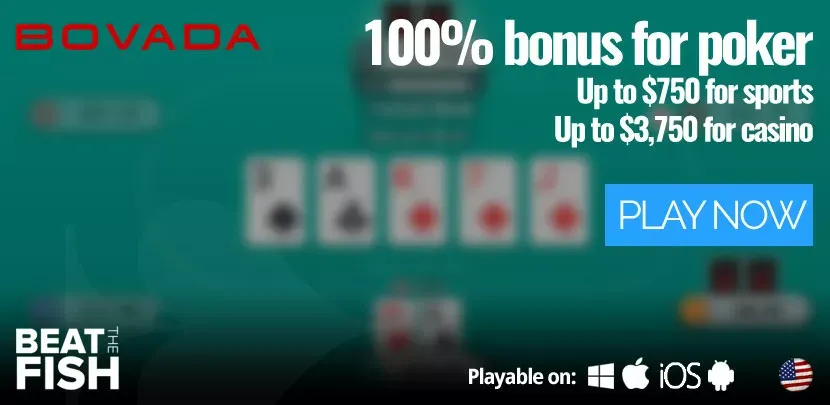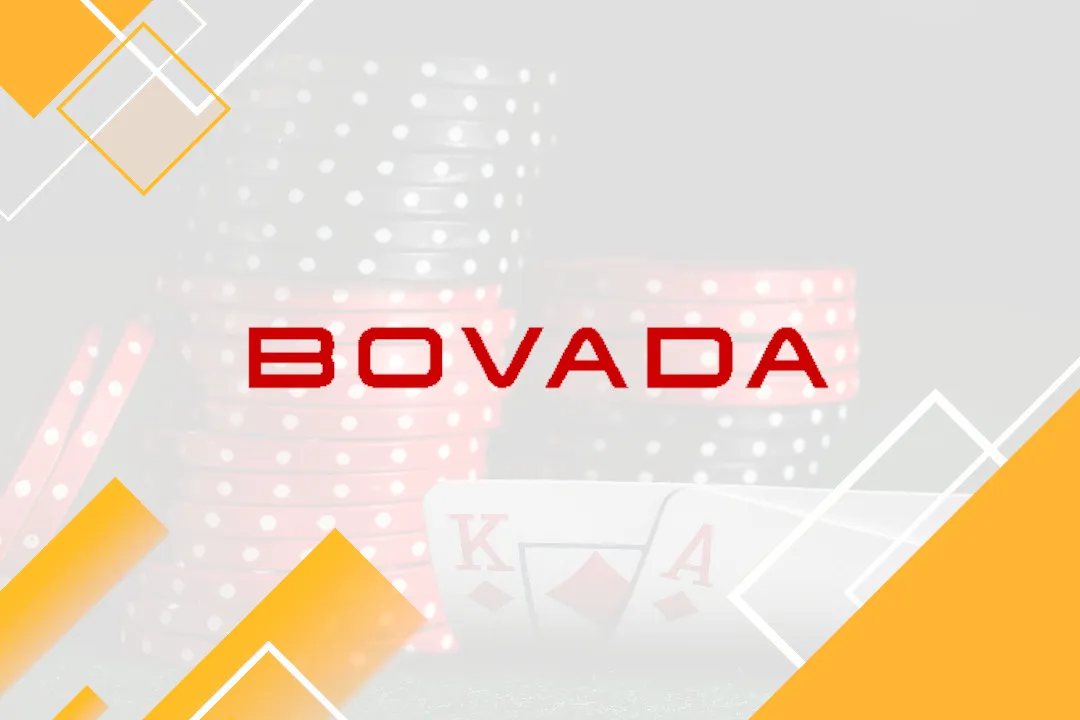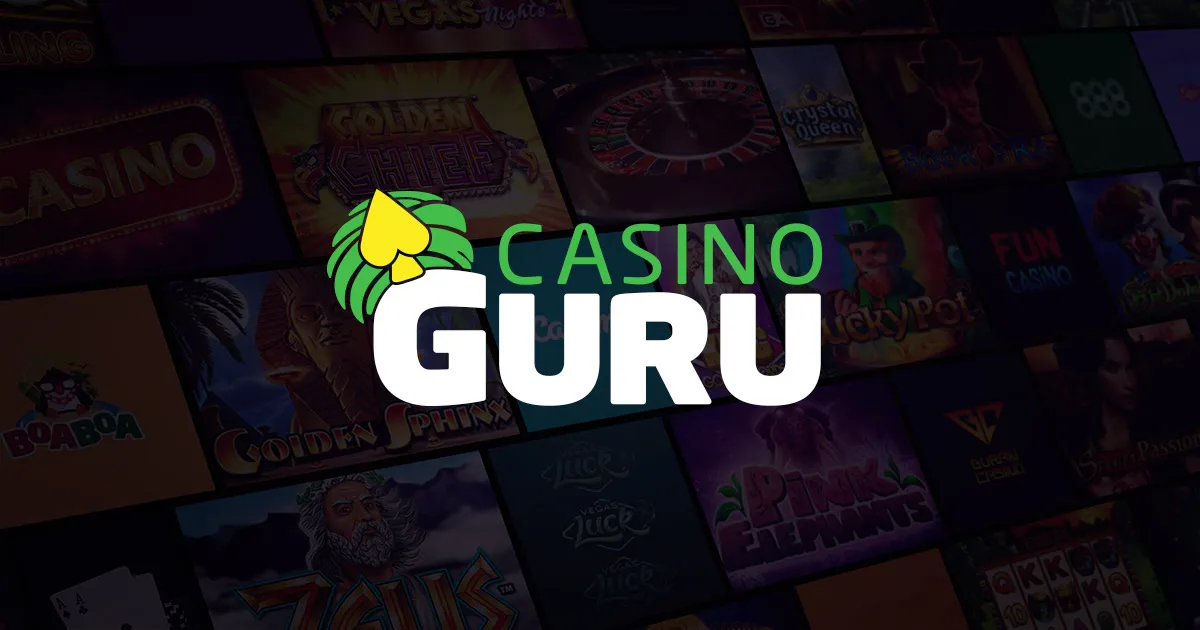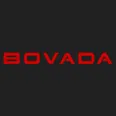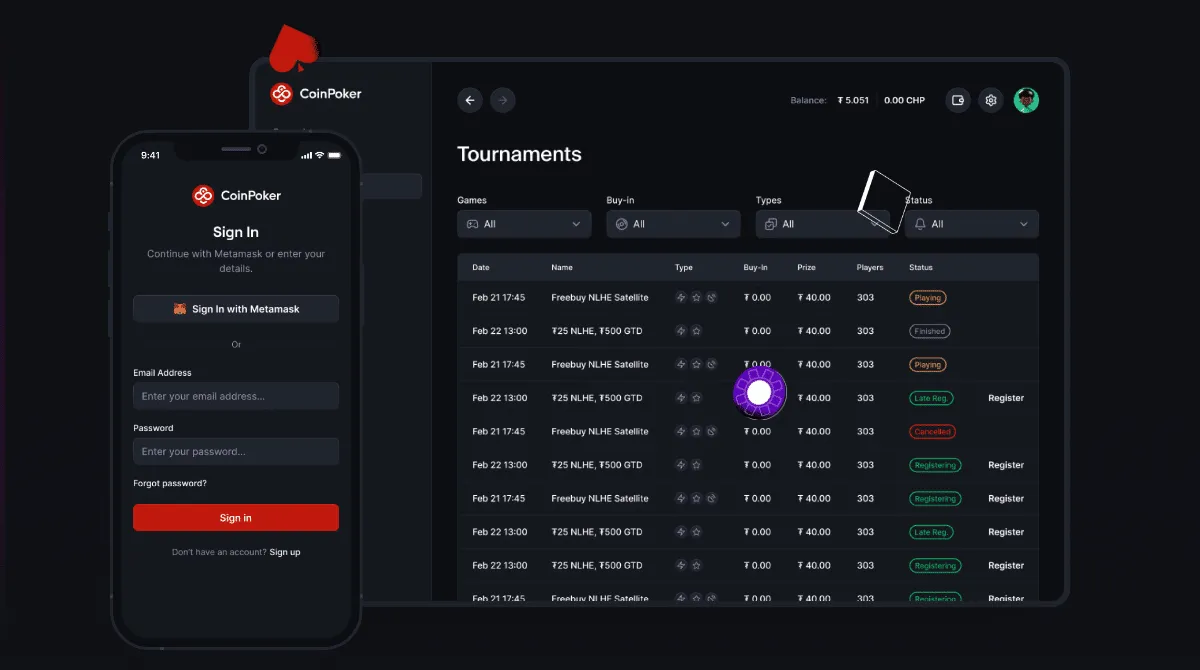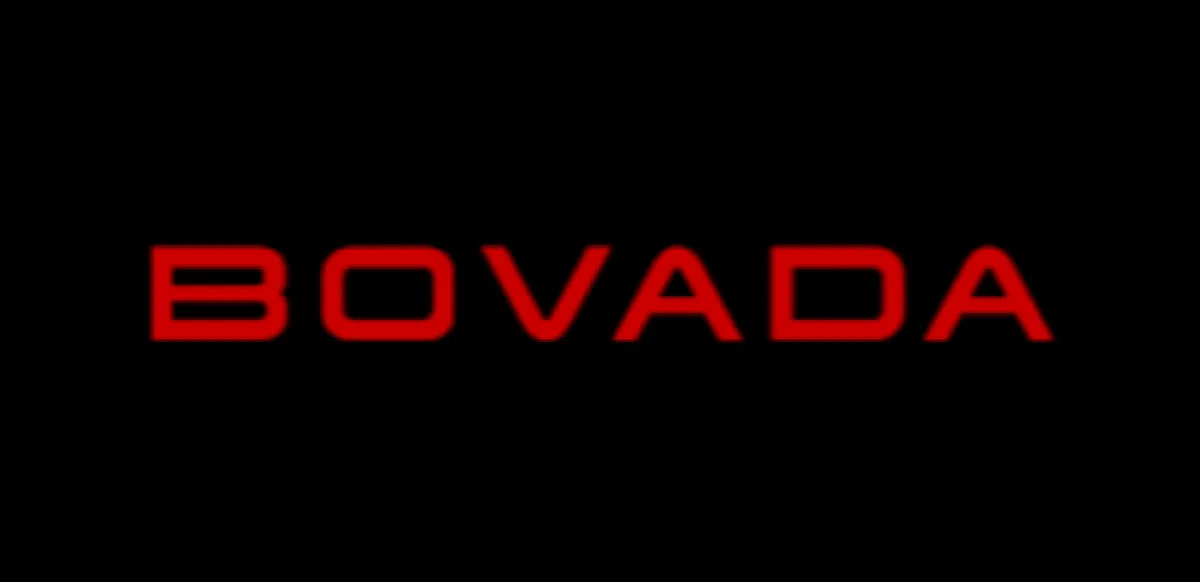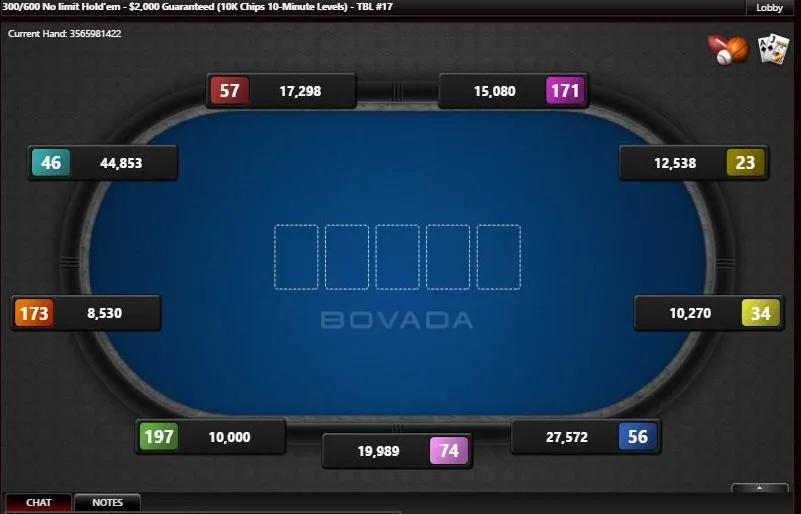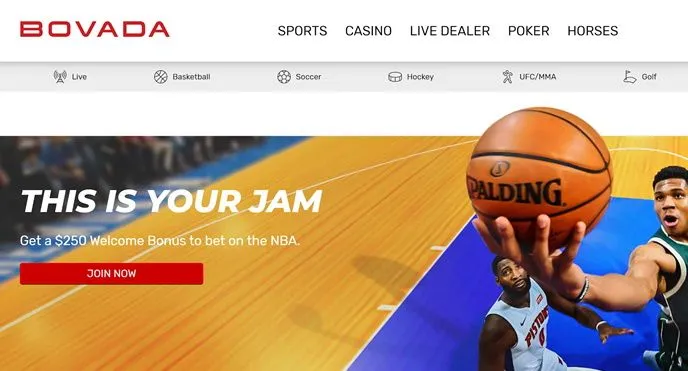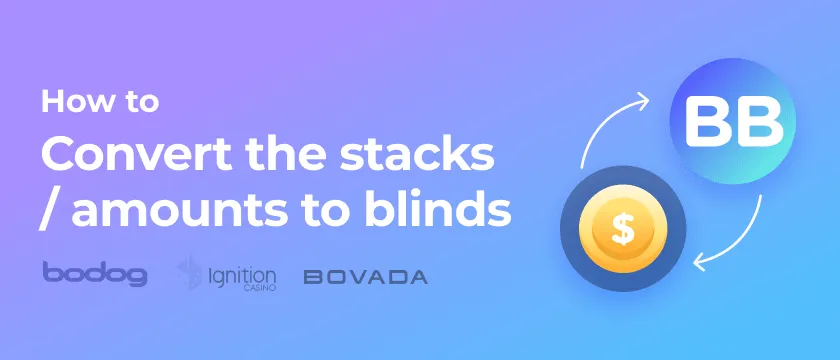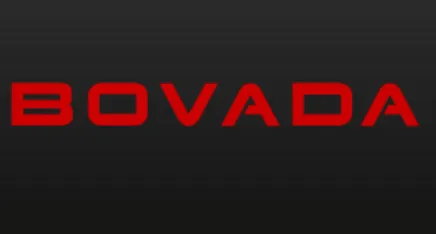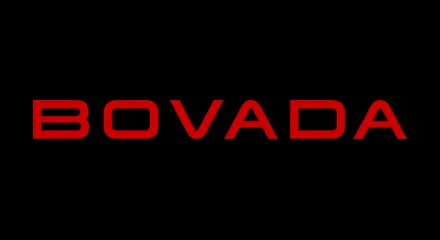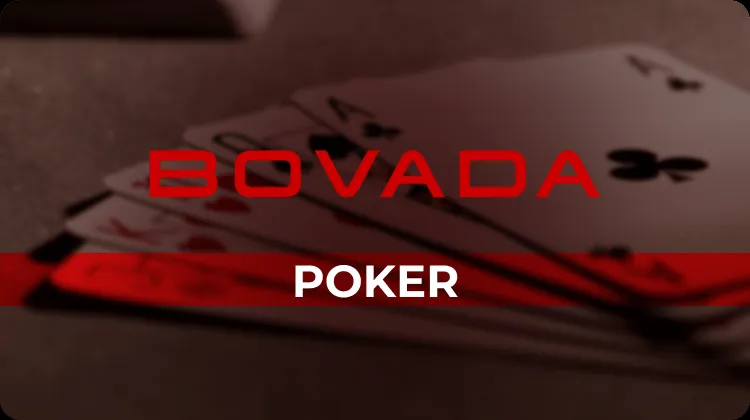How To Play Poker - Basic Rules & Tips GGPoker

Learn the basics of poker with our handy how to poker guide at GGPoker. Brush up on your skills & become a better poker player with help from our Poker School!
HomePoker SchoolHow to Play Poker
How to Play Poker
The Rules of Texas Hold’em Poker
A Brief History of Poker
While no one is absolutely sure about the developmental roots of Poker, it is generally accepted that Poker was first developed in the early to mid 1800’s around New Orleans. The game started to spread on the gambling riverboats of the Mississippi before gaining popularity through the rest of the USA and the World. Over the decades different varieties of the game have waxed and waned in popularity including Draw and Stud variants. The current most popular version of the game, Texas Hold’em, which utilizes “community cards”, is believed to have been introduced by a gambler by the name T. Blondie Forbes. Texas Hold’em maintained relative anonymity until the 1970’s when The World Series of Poker was first televised. Over the years, the Hold’em variant continued to grow in popularity until 2003. This year marked a tipping point in popularity for this version of poker when an unknown player, Chris Moneymaker, won $2.5 million dollars at the Main Event of The World Series of Poker. Since then, no other variant has come close to the popularity of Texas Hold’em, the most popular poker game in the world.
What is Poker?
So you want to learn how to play poker. At its simplest, Poker is a battle of wits between multiple “storytellers”. These “storytellers”, or players, armed only with cards, money, and a limited selection of words, try to convince their opponents that their cards are the best. At the same time, they attempt to read between the lines of the opponent’s story attempting to ascertain whose hand is actually superior. The winner of each hand wins the pot. Poker is a very simple game to learn; however, mastering the intricacies of play can take a lifetime.
## The Basics
Most poker games are played with a standard deck of 52 cards. During each round of poker, each player is dealt cards with which they make the best poker hand they can. Between being dealt cards and revealing the hands, there is at least one round of betting. Relying on just the hand, poker strategy and some luck, each player tries to win the pot.
There are only 2 ways to win at poker:
- At the showdown, have the highest ranked poker hand, or
- Be the last player in the hand from either from scaring or bluffing your opponents into a fold The showdown occurs when there is no clear winner after all the betting is complete. When this happens, the players that are still involved in the round compare their hands. The player with the best poker hand wins.
Game Types
Poker is the generic term for a card game that involves one or more rounds of betting. There are literally dozens of different variations of Poker games. Most poker variants fall into one of 3 classes: Draw, Stud and Community Card. The main difference between these poker games is how the cards are dealt. Draw games have players dealt private hands with an option to swap some cards for new ones from the main deck. In Stud games each player has their own hand, but some of the cards are dealt face up so everyone can see them. In a Community Card poker game, each player has a few face down cards to use in conjunction with face up “Community Cards”. The face up cards are shared by all players to make the best 5 card poker hand.
Betting Varieties
Similar to how poker games are classified in 3 main styles of game, there are 3 main betting variants that are played at most poker venues: Fixed Limit, No Limit and Pot Limit. While the basic rules of the poker game being played does not change with the betting variant, regardless if you are playing a cash game or in a tournament, the strategy one employs does.
Fixed Limit
Also known as Limit, there are restrictions on the bet size that can be made and will usually cap the number of raises allowed in each betting round. Normally in Limit games, there are 2 tiers of betting, the first tier, which is the lower of the 2 tiers, occurs during the first half of the betting rounds. The second tier, usually double the first tier, is for all subsequent betting rounds. In a game of Seven Card Stud, which has 5 rounds of betting, with the Fixed Limits being $20 for the first tier and $40 for the second tier, the game would be written as $20/$40 Limit 7-Card Stud.
Pot Limit
While Pot Limit does restrict the amount a player can bet during any one action, there are no limits on how many times a betting round can be raised allowing for some exciting action and big pots. These games are normally written in some variation of $10/$20 PL X, with the two numbers representing the Small and Big Blinds respectively and the X being the poker variation that is being played (in a game of Omaha poker with the Small Blind at $1 and the Big Blind at $2, it would be written $1/$2 PL Omaha or $1/$2 PLO). The Big Blind is also normally the minimum bet size.
No Limit
No Limit games are exactly as described, no limit on either the bet amount or number of raises in any betting round. Most places you will play poker, whether live or online, do restrict any bets to the amount a player currently has in play on the table. Similar to Pot Limit, games are written as $1/$2 NL X where the $1 is the Small Blind, $2 is the Big Blind and the X is the game. If you were sitting at a Texas Hold’em table with the Small and Big Blinds at $5 and $10 respectively, the game would be written at $5/$10 NL Hold’em or $5/$10 NLHE. The Big Blind is usually the minimum bet size.
Spread Limit
A game where the betting structure is set as a range. Similar to Limit betting, the range during the first half of the betting rounds is usually lower than the second half. A Spread Limit game that offers a betting range of $1 to $10 to start and $1 to $20 in the second half would be written as $1 to $10, $20 on the end. The minimum raise in a game of Spread Limit is equal to the last bet – in a $1-$5 game, Player A bets $1, and Player B raises $3. If Player C chooses to raise, he can only raise $3, $4 or $5.
Half-Pot Limit
Identical to Pot Limit with the maximum bet capped at half the current pot as determined following the same formula as Pot Limit.
Cap Limit
Even more restrictive than Fixed Limits, Cap Limit restricts the maximum amount a player can put into a pot during a hand.. This variation can be played in combination with any of the above betting varieties. During betting when players reach the maximum allowed bet limit, the dealer ends the betting and deals out any remaining cards to complete the hand. If a table is playing Cap Limit, the cap is usually written as such in the game name such as $2/$4 ($100 cap) NLHE, which would be a No Limit Hold’em game with a $2 Small Blind, $4 Big Blind and the most a player could be forced to put in is capped at $100.
## How to Play - An Overview
When learning how to play poker, in addition to the general rules for poker above, there are some common terms that every poker player should know as they start learning the specifics of each variety of poker game. All of this information will make it easier to start developing your own basic poker strategy as you continue to learn how to play poker. For more information on what makes a strong poker strategy, if you want to know more than the basic poker rules, or how to start playing poker online, you should check out the GGPoker poker School.Texas HoldemOmaha PokerShort Deck PokerDraw PokerFive Card StudSeven Card StudTexas Holdem## Texas Hold’em Poker Rules
-
All players put in the Ante if applicable.
-
Small and Big Blinds post the forced bets
-
Starting with the Small Blind, the Dealer deals 1 card at a time face down to each player until everyone has 2 cards (Hole Cards).
-
A round of betting starts with the player to the Left of the Big Blind.
-
The top card of the deck is put face down into the muck (the Burn card). The next 3 cards are dealt face up for the flop.
-
A round of betting starting with the first player to the Dealers left.
-
The top card of the deck is put face down into the muck (the Burn card). The next card is dealt face up for the Turn.
-
The third round of betting commences.
-
The top card of the deck is put face down into the muck (the Burn card). The next card, the final card, is the River, the fifth card dealt face up.
-
The final round of betting.
-
The Showdown occurs with all players showing their hands. The best hand wins. For a more in depth look at Texas Hold’em, clickHERE.Omaha Poker## Omaha Poker Rules
-
All players put in the Ante if applicable.
-
Small and Big Blinds post the forced bets
-
Starting with the Small Blind, the Dealer deals 1 card at a time face down to each player until everyone has 4 cards (Hole Cards)
-
A round of betting starts with the player to the Left of the Big Blind.
-
The top card of the deck is put face down into the muck (the Burn card). The next 3 cards are dealt face up for the flop.
-
A round of betting starting with the first player to the Dealers left.
-
The top card of the deck is put face down into the muck (the Burn card). The next card is dealt face up for the Turn.
-
The third round of betting commences.
-
The top card of the deck is put face down into the muck (the Burn card). The next card is dealt face up for the River.
-
The final round of betting.
-
The Showdown occurs with all players showing their hands. The best hand using exactly two hole cards from the player’s hand and 3 cards from the Community Cards wins. For a more in-depth look at Omaha Poker, click HERE
Short Deck Poker## Short Deck Poker Rules
-
All players put in the Ante if applicable.
-
Small and Big Blinds post the forced bets.
-
Starting with the Small Blind, the Dealer deals 1 card at a time face down to each player until everyone has 2 cards (Hole Cards)
-
A round of betting starts with the player to the Left of the Big Blind.
-
The top card of the deck is put face down into the muck (the Burn card). The next 3 cards are dealt face up for the flop.
-
A round of betting starting with the first player to the Dealers left.
-
The top card of the deck is put face down into the muck (the Burn card). The next card is dealt face up for the Turn.
-
The third round of betting commences.
-
The top card of the deck is put face down into the muck (the Burn card). The next card is dealt face up for the River.
-
The final round of betting.
-
The Showdown occurs with all players showing their hands. The best hand wins. This game uses different Hand Ranking found HEREDraw Poker## Draw Poker Rules
-
All players put in the Ante if applicable.
-
Draw games usually do not have blinds, but if they are active, Small and Big Blinds post the forced bets
-
Starting with the Small Blind, the Dealer deals 1 card at a time face down to each player until everyone has 5 cards (Hole Cards)
-
A betting round starts with the player to the Left of the Dealer or Big Blind if playing with Blinds.
-
Starting to the left of the Dealer, players can choose to drop and redraw cards from their hands. The number of cards a player can discard is determined prior to the hand starting.
-
A betting round starting with the player who made the last bet or raise.
-
Steps 5 and 6 are repeated until the predetermined number of Draws have been completed.
-
The final betting round.
-
The Showdown occurs with all players showing their hands. The best hand wins. Five Card Stud## Five Card Stud Poker Rules
-
All players put in the Ante if applicable.
-
Stud games usually do not have blinds, but if they are active, Small and Big Blinds post the forced bets
-
Starting to the left of the Dealer, deal 1 card face down to each player (Hole Card) followed by 1 card face up to each player.
-
A betting round starts with the player to the Left of the Dealer or Big Blind if playing with Blinds.
-
Starting to the left of the Dealer, each player is dealt 1 card face up.
-
A round of betting starting with the player who made the last bet or raise.
-
Steps 5 and 6 are repeated until each player has 4 cards face up.
-
The final round of betting.
-
The Showdown occurs with all players showing their hands. The best hand wins. Seven Card Stud## Seven Card Stud Poker Rules
-
All players put in the Ante if applicable.
-
Stud games usually do not have blinds, but if they are active, Small and Big Blinds post the forced bets
-
Starting to the left of the Dealer, deals 1 card at a time face down to each player until everyone has 2 face down cards (Hole Cards). The Dealer then deals 1 card face up to each player.
-
A round of betting starts with the player to the Left of the Dealer or Big Blind if playing with Blinds.
-
Starting to the left of the Dealer, each player is dealt 1 card face up.
-
A round of betting starting with the player who made the last bet or raise.
-
Steps 5 and 6 are repeated until each player has 4 cards face up. At this point each player still in the hand should have 6 cards, 2 face down and 4 face up.
-
Another round of betting starting with the player who made the last bet or raise.
-
Starting to the left of the Dealer, each player is dealt 1 card face down.
-
The final round of betting.
-
The Showdown occurs with all players showing their hands. The best hand wins.
Important Poker Terms
When learning how to play poker, in addition to the general rules for poker above, there are some common terms that every poker player should know as they start learning the specifics of each variety of poker game. All of this information will make it easier to start developing your own basic poker strategy as you continue to learn how to play poker. For more information on what makes a strong poker strategy, if you want to know more than the basic poker rules, or how to start playing poker online, you should check out the GGPoker poker School.General TermsHand RankingsAction & BettingPositionsGeneral Terms## General Terms
- Face Up – Cards that are dealt with the face showing for everyone to see
- Face Down – Cards that are dealt with their face hidden, intended for viewing only by the player to whom they were dealt.
- Chips – The funds owned by a player.
- Muck – Where the dead, folded or unused cards go during a hand of poker. These cards should always remain face down.
- Community Cards – A group of face-up cards that all players use to create their poker hands.
- Hole Cards – In a game with community cards, a player’s Hole Cards are for use only by them for the purpose of winning the hand.
- Pot – Where the bet chips are placed during a hand of poker. It is considered to be poor form to drop your chips directly into the pot while there is still action to occur during a round of betting.
- The Nuts – The best possible poker hand during a single round of play.
- Flop – In a game with Community Cards, this is the first group of shared cards.
- Turn – In a game with Community Cards, this is the second group of shared cards.
- River – In a game with Community Cards, this is the final group of shared cards.
For a more in depth look at Texas Hold’em, clickHERE.Hand Rankings## Hand Rankings
- Royal Flush – Also known as a Royal Straight Flush, the Royal Flush consists of the A, K, Q, J and 10, of the same suit.
- Straight Flush – Five sequential cards all of the same suit. This hand loses only to a Royal Flush.
- Four of a Kind – Four cards of the same rank plus 1 extra card.
- Full House – Three-of-a-kind plus a pair.
- Flush – Any five cards of the same suit. Rank does not matter.
- Straight – Any five sequential cards. The suits do not matter.
- Three of a Kind – Three cards of the same rank plus any 2 non-paired cards.
- Two Pair – Two different pairs plus one other card.
- One Pair – Two cards of the same rank plus any 3 non-paired cards.
- High Card – When your hand does not fill any other requirements. Ranked from the Highest card down to the Lowest.
For more information on Hand Rankings see our Poker Hand Rankings Guide
Action & Betting## Action & Betting
- Action – Refers to the choice of things a player can do on their turn during a round of betting. During the course of play, a player may only take 1 action on their turn. That action is determined by the first word they say of the following:
- Bet – The first quantity of chips put into a pot by a player during a round of betting.
- Call – A player who Calls has agreed to match the previous bet.
- Raise – A raise increases the amount of the current bet. In most games, the raise must be at least equal to the last amount bet.
- Fold – A player who Folds returns their cards, face down, to the muck and takes no more action during the hand.
- The Blinds – Forced bets that occur before any betting action or cards are dealt. Blinds are used to induce betting action during a hand of poker.
- Small Blind (SB) – A forced bet paid by the player to the left of the dealer before any betting action occurs. The Small Blind is usually equivalent to half of the minimum bet. There are situations where there will be no Small Blind in a hand.
- Big Blind (BB) – A forced bet paid by the player in the second seat to the left of the dealer before any betting action occurs. Big Blinds can also be used as a unit of measure for a player’s chip stack – a player with $200 in chips playing at a $1/$2 NLHE table would have 100BB.
- Ante – A forced bet paid by all players before any cards are dealt.
- String Bet – A String Bet or Sting Raise occurs when a player calls, either by putting in chips equal to the current bet and then grabbing more chips to put in or by saying “Call” (some people will say “I will see that bet” or something similar to that) then saying “and Raise”. This action is not allowed in most poker games and cannot be done when playing online poker.
- Straddle – A straddle is an optional third blind that is declared prior to the cards being dealt. The straddle is always 2BB and is used mainly to induce action during a game. Some online poker sites will offer a straddle at specific tables.
- Donk Bet – a donk bet is to post-flop bet where a player bests from out of position and leads into the aggressor.
- C-Bet – Also known as a continuation bet, is a follow-up bet by someone who bet on the previous street.
Positions## Positions
- Position – Position refers to a player’s seat at the table in relation to the Dealer.
- Dealer – The Dealer refers to the last player to act in a round of betting. Usually indicated by a large puck, the Dealer position moves clockwise around the table at the end of each hand.
- Small Blind (SB) – Small Blind (SB) is the name of the seat immediately to the left of the Dealer.
- Big Blind (BB) – Big Blind (BB) is also the name of the seat 2 positions to the left of the Dealer.
- Under the Gun (UTG) – The position of Under the Gun, or UTG, is the player immediately to the left of the Big Blind. They are the first to act in the first round of betting. UTG+1, UTG+2 etc. refers to the players 1 seat and 2 seats to the left of UTG.
- Hijack – The Hijack position is 2 seats to the right of the Dealer
- Cutoff – The Cutoff position refers to the player immediately to the right of the dealer.
- Early Position – Refers to any player that would be in the first third of players to act during a round of betting. In a 6-player game, this refers to the Small Blind and Big Blind. In a 10-player game, it would refer to the Small Blind, Big Blind, and UTG.
- Middle Position (MP) – Refers to any player that would be in the second third of players to act during a round of betting. In a 6-player game, this refers to UTG and HJ. In a 10-player game, it would refer to UTG+1, UTG+2, MP, and MP+1.
- Late Position – Refers to any player that would be in the last third of players to act during a round of betting. In a 6-player game, this refers to CO and the Dealer. In a 10-player game it refers to HJ, CO and the Dealer.
Basic Poker Strategy
Basic Poker Strategy
Poker has become popular because it combines strategy, psychology, and luck as you battle for dominance. As you learn how to play poker, and before you start playing, it is important to learn some basic poker strategies which will help increase your chances of winning. The first thing you should do is memorize the poker hand rankings. Many beginning players make mistakes when they think they have a winning hand but have either misread their cards or mixed up the hand rankings. Memorizing the hand rankings should be amongst the first things you do when learning how to play poker. Hand rankings can change depending on which variation of poker or the house rules you are playing so always check before you start. You can always review the basic hand rankings at our handyPoker Hand Rankings Guide if you need a reminder.
You should also learn some basic poker terms to help understand what is happening during each hand. Knowing the proper terminology for the allowed actions during play – Bet, Call, Raise or Fold – can prevent mistakes that can cause you to lose your stack or keep you from maximizing your victories. In addition to the basic terms in the section above, you can check out the GGPokerPoker Terms Page for more information.
It is also very important to familiarize yourself with the variation of poker you are playing. While Texas Hold’em, Omaha, and Short Deck follow the same basic format, albeit, with slight changes in the hand rankings, it is always a good idea, particularly in home games, to find out if there are any non-standard rules so you are not surprised by something strange.
Poker Tips for Beginners
Poker is predominantly a game of skill. While there is some luck involved, there is a reason the same players continue to dominate the game year after year. When you first start playing, learning the basic rules and figuring out what to do, never mind any strategy, can appear to be a daunting, if not impossible task. Whether you play in tournaments or cash games, here are some pro tips for everyone who is learning how to play poker:
Don’t Play Every Hand
One common mistake made by most beginners is playing every hand. New players tend to ignore, or just do not understand, the probability of success of their hands or what their opponent may have. Sitting at a table with 5 opponents, on average, you will win 1 hand in 6. That means if you were to play every hand, you would lose 5 hands and only win 1. Establishing which hands to play and which to fold is one key to early success at poker.
Cards on the Table
Never lose focus on what cards you have been dealt as they are crucial to your success in any hand. Just as important is what the opponent has or could have. Poker is a game of incomplete information and losing focus on the information available – the Community Cards and how they could help your opponent – can cause you to overestimate your hand strength and lose a valuable pot.
Don’t Bluff Too Much
Another common misconception is you need to bluff to win. While bluffing does have its place, it is always a better strategy to play your hand well. As a beginning player you are unlikely to be aware of what tells you or your opponents have and without knowing, your bluffs are likely to be easily detected. Successful bluffing comes from practice and experience.
Think about Position
Table position and how it relates to poker strategy is particularly important in any poker game. While in Stud and Draw games where your position can change with the betting, in Texas Hold’em, Omaha or Short Deck it is especially important as your position does not change during the hand. As stated previously, poker is a game of incomplete information and being in a later betting spot allows you to see how other players bet and react to bet giving you more time and information on how to best play your hand.
Play for the Long Term
As a player who is still learning how to play poker, you are going to lose. Not all the time, but do not be surprised if you are losing most of the time. Don’t be discouraged by this, every player, at points during their career, even the all time greats, go through extended losing streaks. Sometimes the cards just don’t come in your favor. While it is frustrating when nothing seems to be going your way, you can still learn.
Poker Tips for Intermediates
You feel like you understand the basics of the game and are ready to take it to the next level. To assist you in adjusting and advancing your strategy here are some intermediate tips:
Know the Odds
Once you have the basics of a strategy down to an art form, it is time to start taking your game to the next level. One thing that will assist greatly in fine-tuning your strategy is knowing the odds. Understanding the chances of a specific card or cards coming up on the turn or on the river can assist you in making the correct call, fold or raise.
Bluffing
While you should avoid bluffing as a beginner, learning how to bluff and how to detect a bluff is essential to becoming a great poker player. Bluffing is the art of convincing your opponent that you have a better hand than you actually do. The difficulty in being good at bluffing is how you are limited in ‘telling the story’.
Raising
Raising puts pressure on your opponents. It can also get them to give up information they may not want you to know. As your poker prowess increases, raising more often can help you understand your opponents tendencies which will lead to a better understanding of not only when to raise for maximum effect, but also how much to raise.
Take More Risks
As you become more experienced at poker, you should try expanding the range of cards you play. Start playing low pairs or a weak Ace when the pot is big enough to justify the risk. On occasion you could try playing even more unconventional hands which will, when you do make a winning hand, confuse your opponents.
Read Betting Patterns
One key to advancing your poker strategy to the next level is to identify your opponents betting patterns and strategies. Through these patterns and your growth within the game, you can start to recognize which players are weakest. Learning to read their betting patterns, body movements and positions and poker faces will help you identify their tells and make your decisions even easier.
Poker Tips for Advanced Players
You’ve now mastered the basics and have a very strong understanding of the game. You’ve adjusted your strategy a number of times and are now ready to up your game yet again. Here are some tips to prepare you for what comes next:
Use Math
A deeper understanding of poker odds involves mathematical theory. While being able to pull formulas and equations from thin air may not be something you are comfortable with, mathematical theory is a key to improving your game. As a beginner or intermediate player you may have relied on a cheat sheet or calculator to help with the odds, it is time to start memorizing some of these charts. Having immediate access to this knowledge will help you with more complex decisions when you don’t have time to refer to your earlier notes and charts.
Advanced Bluffs
Once you are comfortable reading the atmosphere at the table, your opponents betting style, their movements and poker face…when you know who you are playing against, it could be time for some advanced bluffs. Many times a bluffing player will start the bluff during the pre-flop action and lose their nerve before the end. This is a costly mistake. When you choose to bluff, you should always do your best to see it to completion. If you are playing Texas Hold’em, make the decision you have Aces and play the entire hand as if you had those Aces.
Perfect your Poker Face
The best teams don’t have just a good offense, they have a good defense too. In poker your defense is your poker face. Taking your game to the next level includes having control over yourself and your actions. No different than when you watch your opponents for tells, they are watching you. Take note of what your opponent does, what they are watching on you. Identify what they are noticing and eliminate them from your game.
Advanced Raises
The raise is one of the most effective tactics in poker when it comes to intimidating your opponents. Raising or re-raising can put the pressure back on your opponent. When anyone is under pressure they tend to make mistakes, particularly when there is a lot of money at stake.
Keep on Learning
One of the best things about poker is there is always more to learn. You can continue to advance and refine your skills and game to the highest levels. Whether by reading on the subject or watching the pros in action onGGPoker.tv or any other place, there is always a way to learn more about this mind game.
How to Start Playing Online Poker
One of the easiest ways to start your journey into the world of online poker is with GGPoker. GGPoker offers a range of real money poker games and tournaments in a wide variety of formats and stakes to suit your skill level and preference. To start playing, all you need to do is download the app, sign-up and create your poker account for free, then select the online poker game you want to play.
Other Articles for Beginners
Whether you are still trying to learn, or if you have familiarized yourself with the game and established a basic strategy, there is always more you can know. Here are some articles you may find useful as you continue your journey through the world of live and online poker: poker terms, our strategy tips for every level of player, and an explanation of the poker hand probability. While you’re there, check out GGPoker’s Poker School!## Final Thoughts
The excitement of playing poker and winning that big pot or being crowned tournament champion can be exhilarating, it is easy to lose sight of the important things. So as a closing thought here are some “do nots”
-
Don’t play above your limits
-
Don’t play when you are not comfortable
-
Don’t gamble money you do not have
-
Don’t gamble drunk or tired
-
Don’t treat your opponents poorly (be a gracious winner and loser)
-
Don’t forget about the importance of friends and family, after all, they helped make you everything you are. And most importantly, ALWAYS have fun and Play Responsibly
-
All players put in the Ante if applicable.
-
Small and Big Blinds post the forced bets
-
Starting with the Small Blind, the Dealer deals 1 card at a time face down to each player until everyone has 2 cards (Hole Cards).
-
A round of betting starts with the player to the Left of the Big Blind.
-
The top card of the deck is put face down into the muck (the Burn card). The next 3 cards are dealt face up for the flop.
-
A round of betting starting with the first player to the Dealers left.
-
The top card of the deck is put face down into the muck (the Burn card). The next card is dealt face up for the Turn.
-
The third round of betting commences.
-
The top card of the deck is put face down into the muck (the Burn card). The next card, the final card, is the River, the fifth card dealt face up.
-
The final round of betting.
-
The Showdown occurs with all players showing their hands. The best hand wins. For a more in depth look at Texas Hold’em, clickHERE.###
-
All players put in the Ante if applicable.
-
Small and Big Blinds post the forced bets
-
Starting with the Small Blind, the Dealer deals 1 card at a time face down to each player until everyone has 4 cards (Hole Cards)
-
A round of betting starts with the player to the Left of the Big Blind.
-
The top card of the deck is put face down into the muck (the Burn card). The next 3 cards are dealt face up for the flop.
-
A round of betting starting with the first player to the Dealers left.
-
The top card of the deck is put face down into the muck (the Burn card). The next card is dealt face up for the Turn.
-
The third round of betting commences.
-
The top card of the deck is put face down into the muck (the Burn card). The next card is dealt face up for the River.
-
The final round of betting.
-
The Showdown occurs with all players showing their hands. The best hand using exactly two hole cards from the player’s hand and 3 cards from the Community Cards wins. For a more in-depth look at Omaha Poker, click HERE
-
All players put in the Ante if applicable.
-
Small and Big Blinds post the forced bets.
-
Starting with the Small Blind, the Dealer deals 1 card at a time face down to each player until everyone has 2 cards (Hole Cards)
-
A round of betting starts with the player to the Left of the Big Blind.
-
The top card of the deck is put face down into the muck (the Burn card). The next 3 cards are dealt face up for the flop.
-
A round of betting starting with the first player to the Dealers left.
-
The top card of the deck is put face down into the muck (the Burn card). The next card is dealt face up for the Turn.
-
The third round of betting commences.
-
The top card of the deck is put face down into the muck (the Burn card). The next card is dealt face up for the River.
-
The final round of betting.
-
The Showdown occurs with all players showing their hands. The best hand wins. This game uses different Hand Ranking found HERE
-
All players put in the Ante if applicable.
-
Draw games usually do not have blinds, but if they are active, Small and Big Blinds post the forced bets
-
Starting with the Small Blind, the Dealer deals 1 card at a time face down to each player until everyone has 5 cards (Hole Cards)
-
A betting round starts with the player to the Left of the Dealer or Big Blind if playing with Blinds.
-
Starting to the left of the Dealer, players can choose to drop and redraw cards from their hands. The number of cards a player can discard is determined prior to the hand starting.
-
A betting round starting with the player who made the last bet or raise.
-
Steps 5 and 6 are repeated until the predetermined number of Draws have been completed.
-
The final betting round.
-
The Showdown occurs with all players showing their hands. The best hand wins.
-
All players put in the Ante if applicable.
-
Stud games usually do not have blinds, but if they are active, Small and Big Blinds post the forced bets
-
Starting to the left of the Dealer, deal 1 card face down to each player (Hole Card) followed by 1 card face up to each player.
-
A betting round starts with the player to the Left of the Dealer or Big Blind if playing with Blinds.
-
Starting to the left of the Dealer, each player is dealt 1 card face up.
-
A round of betting starting with the player who made the last bet or raise.
-
Steps 5 and 6 are repeated until each player has 4 cards face up.
-
The final round of betting.
-
The Showdown occurs with all players showing their hands. The best hand wins.
-
All players put in the Ante if applicable.
-
Stud games usually do not have blinds, but if they are active, Small and Big Blinds post the forced bets
-
Starting to the left of the Dealer, deals 1 card at a time face down to each player until everyone has 2 face down cards (Hole Cards). The Dealer then deals 1 card face up to each player.
-
A round of betting starts with the player to the Left of the Dealer or Big Blind if playing with Blinds.
-
Starting to the left of the Dealer, each player is dealt 1 card face up.
-
A round of betting starting with the player who made the last bet or raise.
-
Steps 5 and 6 are repeated until each player has 4 cards face up. At this point each player still in the hand should have 6 cards, 2 face down and 4 face up.
-
Another round of betting starting with the player who made the last bet or raise.
-
Starting to the left of the Dealer, each player is dealt 1 card face down.
-
The final round of betting.
-
The Showdown occurs with all players showing their hands. The best hand wins.
- Face Up – Cards that are dealt with the face showing for everyone to see
- Face Down – Cards that are dealt with their face hidden, intended for viewing only by the player to whom they were dealt.
- Chips – The funds owned by a player.
- Muck – Where the dead, folded or unused cards go during a hand of poker. These cards should always remain face down.
- Community Cards – A group of face-up cards that all players use to create their poker hands.
- Hole Cards – In a game with community cards, a player’s Hole Cards are for use only by them for the purpose of winning the hand.
- Pot – Where the bet chips are placed during a hand of poker. It is considered to be poor form to drop your chips directly into the pot while there is still action to occur during a round of betting.
- The Nuts – The best possible poker hand during a single round of play.
- Flop – In a game with Community Cards, this is the first group of shared cards.
- Turn – In a game with Community Cards, this is the second group of shared cards.
- River – In a game with Community Cards, this is the final group of shared cards.
For a more in depth look at Texas Hold’em, clickHERE.###
- Royal Flush – Also known as a Royal Straight Flush, the Royal Flush consists of the A, K, Q, J and 10, of the same suit.
- Straight Flush – Five sequential cards all of the same suit. This hand loses only to a Royal Flush.
- Four of a Kind – Four cards of the same rank plus 1 extra card.
- Full House – Three-of-a-kind plus a pair.
- Flush – Any five cards of the same suit. Rank does not matter.
- Straight – Any five sequential cards. The suits do not matter.
- Three of a Kind – Three cards of the same rank plus any 2 non-paired cards.
- Two Pair – Two different pairs plus one other card.
- One Pair – Two cards of the same rank plus any 3 non-paired cards.
- High Card – When your hand does not fill any other requirements. Ranked from the Highest card down to the Lowest.
For more information on Hand Rankings see our Poker Hand Rankings Guide
-
Action – Refers to the choice of things a player can do on their turn during a round of betting. During the course of play, a player may only take 1 action on their turn. That action is determined by the first word they say of the following:
- Bet – The first quantity of chips put into a pot by a player during a round of betting.
- Call – A player who Calls has agreed to match the previous bet.
- Raise – A raise increases the amount of the current bet. In most games, the raise must be at least equal to the last amount bet.
- Fold – A player who Folds returns their cards, face down, to the muck and takes no more action during the hand.
-
The Blinds – Forced bets that occur before any betting action or cards are dealt. Blinds are used to induce betting action during a hand of poker.
-
Small Blind (SB) – A forced bet paid by the player to the left of the dealer before any betting action occurs. The Small Blind is usually equivalent to half of the minimum bet. There are situations where there will be no Small Blind in a hand.
-
Big Blind (BB) – A forced bet paid by the player in the second seat to the left of the dealer before any betting action occurs. Big Blinds can also be used as a unit of measure for a player’s chip stack – a player with $200 in chips playing at a $1/$2 NLHE table would have 100BB.
-
Ante – A forced bet paid by all players before any cards are dealt.
-
String Bet – A String Bet or Sting Raise occurs when a player calls, either by putting in chips equal to the current bet and then grabbing more chips to put in or by saying “Call” (some people will say “I will see that bet” or something similar to that) then saying “and Raise”. This action is not allowed in most poker games and cannot be done when playing online poker.
-
Straddle – A straddle is an optional third blind that is declared prior to the cards being dealt. The straddle is always 2BB and is used mainly to induce action during a game. Some online poker sites will offer a straddle at specific tables.
-
Donk Bet – a donk bet is to post-flop bet where a player bests from out of position and leads into the aggressor.
-
C-Bet – Also known as a continuation bet, is a follow-up bet by someone who bet on the previous street.
-
Position – Position refers to a player’s seat at the table in relation to the Dealer.
-
Dealer – The Dealer refers to the last player to act in a round of betting. Usually indicated by a large puck, the Dealer position moves clockwise around the table at the end of each hand.
-
Small Blind (SB) – Small Blind (SB) is the name of the seat immediately to the left of the Dealer.
-
Big Blind (BB) – Big Blind (BB) is also the name of the seat 2 positions to the left of the Dealer.
-
Under the Gun (UTG) – The position of Under the Gun, or UTG, is the player immediately to the left of the Big Blind. They are the first to act in the first round of betting. UTG+1, UTG+2 etc. refers to the players 1 seat and 2 seats to the left of UTG.
-
Hijack – The Hijack position is 2 seats to the right of the Dealer
-
Cutoff – The Cutoff position refers to the player immediately to the right of the dealer.
-
Early Position – Refers to any player that would be in the first third of players to act during a round of betting. In a 6-player game, this refers to the Small Blind and Big Blind. In a 10-player game, it would refer to the Small Blind, Big Blind, and UTG.
-
Middle Position (MP) – Refers to any player that would be in the second third of players to act during a round of betting. In a 6-player game, this refers to UTG and HJ. In a 10-player game, it would refer to UTG+1, UTG+2, MP, and MP+1.
-
Late Position – Refers to any player that would be in the last third of players to act during a round of betting. In a 6-player game, this refers to CO and the Dealer. In a 10-player game it refers to HJ, CO and the Dealer.
Poker has become popular because it combines strategy, psychology, and luck as you battle for dominance. As you learn how to play poker, and before you start playing, it is important to learn some basic poker strategies which will help increase your chances of winning. The first thing you should do is memorize the poker hand rankings. Many beginning players make mistakes when they think they have a winning hand but have either misread their cards or mixed up the hand rankings. Memorizing the hand rankings should be amongst the first things you do when learning how to play poker. Hand rankings can change depending on which variation of poker or the house rules you are playing so always check before you start. You can always review the basic hand rankings at our handyPoker Hand Rankings Guide if you need a reminder.
× The content on this page is for informational purposes only. (You will not be able to sign-up from your current location) ×
FAQ
What are the different types of WPT?
What are the different types of WPT?
Table 1
| WPT Technology | Frequency |
|---|---|
| Capacitive | CPT |
| Laser | LPT |
| Radio frequency | RFPT |
| Acoustic | APT |
Can you play WPT global on phone?
Can you play WPT global on phone?
Create an account to join the WPT Global poker community. Choose your poker nickname, fill in a few details and verify your email, then you’re all set. Download poker to your PC, Mac, mobile or tablet and start playing the games you love in minutes.
Can you withdraw from WPT Global?
Can you withdraw from WPT Global?
Before making your first withdrawal, WPT Global, as a licensed operator, requires new customers to verify their account by providing the necessary documentation. This includes: Documentation that proves your identity such as a driving licence or passport.
Who is the best WPT player?
Who is the best WPT player?
Leaderboard
| Rank | Player | Titles |
|---|---|---|
| 1 | Carlos Mortensen | 3 |
| 2 | Daniel Negreanu | 2 |
| 3 | Michael Mizrachi | 2 |
| 4 | Fedor Holz | 1 |
What forms of payment are accepted on WPT Global?
What forms of payment are accepted on WPT Global?
Players can use a range of payment methods (depending on region) including Visa, bank transfer, NETELLER, Skrill, and cryptocurrencies such as Bitcoin, Ethereum, Litecoin and more via Coinspaid and Coindirect.
Other methods include (available in some regions): Interac, Muchbetter, PIX, Boleto, Ecopayz, Astropay, and Luxon.
















